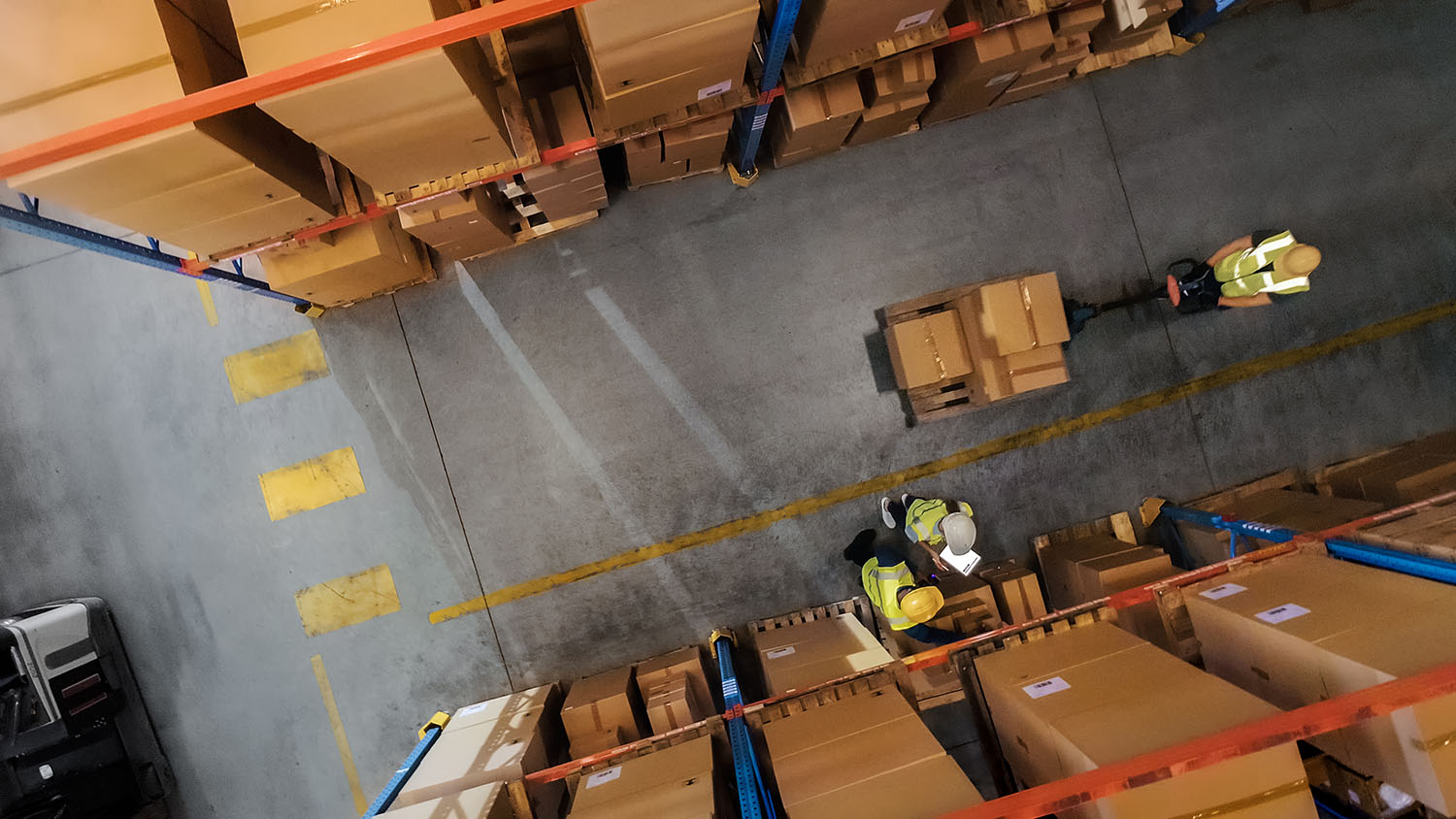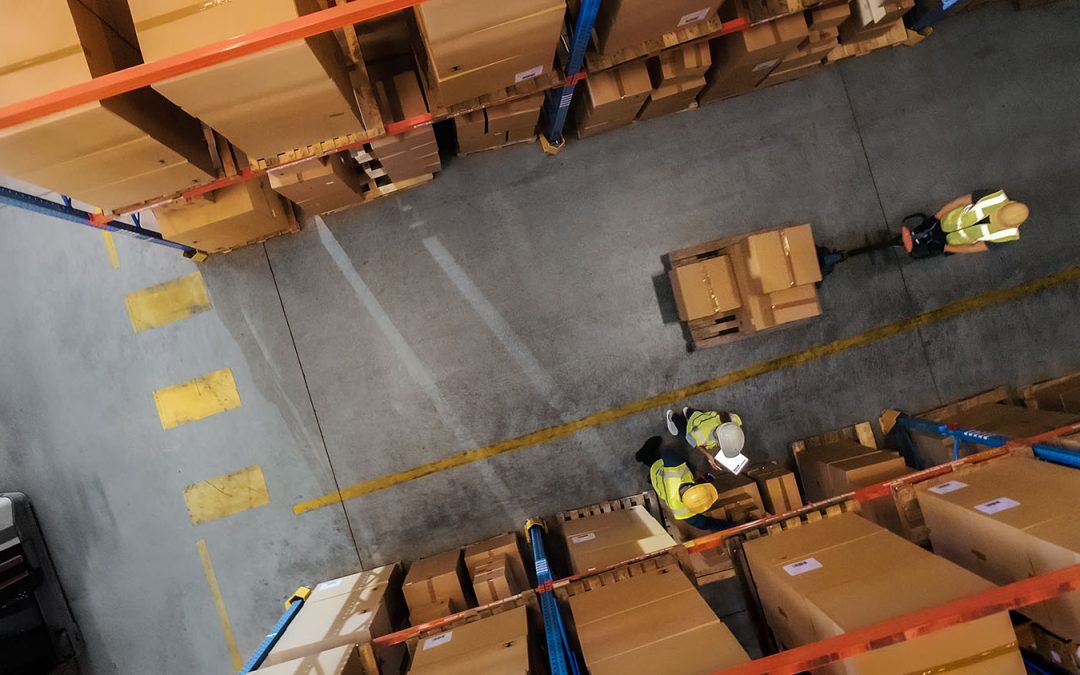The Comprehensive Guide Every Warehouse Needs
Implementing a new WMS is no small feat. It takes planning and collaboration to transition to new warehouse technology, and the way you manage this transition is going to be fundamental to the success of your project — and your operations.
To help you through the implementation process, we’ve compiled our 10 best practices for success and a helpful checklist to assist your journey.
Download the pdf free: WMS Implementation Guide: The Comprehensive Checklist Every Warehouse Needs
Download the PDF
Introduction
Warehouses across the country are changing. Supply chain shifts and a global pandemic have highlighted the need for businesses to be adaptive to sudden market changes. If you are using a warehouse management system that is not flexible enough to handle current and future demands, then it may be time for an upgrade.
Implementing a new WMS is no small feat though, it takes planning and collaboration to transition to a new system, and the way you manage this change is going to be fundamental to the success of your project — and your operations.
Once you commit to significant technology changes, you’ll need to involve every area of the warehouse, with teams handling the planning, implementation, go-live and post go-live stages.
To help you through the implementation process, we’ve compiled our 10 best practices for success and a helpful checklist to assist your journey.
Best Practice: 10 Steps for Implementation
1. Assemble an implementation team
Choosing a team to champion your WMS implementation can help facilitate a smooth and successful transition. You likely have a range of subject matter experts in your warehouse, from stock control to order fulfillment, so you should take advantage of the resources at your disposal.
Gathering input from different departments from the early stages of implementation can also help you avoid overlooking any key requirements or impediments. The entire warehouse will be using and relying on your new software, so more minds are better than one.
Assembling your team and identifying project ownership will depend on the size and capacity of your company, but there are a few essential roles within an implementation team that will ensure all bases are covered.
These include:
• The project manager: they will be responsible for leading the project, helping to manage the implementation team, the progression of the implementation, and problem-solving any obstacles.
• The warehouse manager: having a management resource from the warehouse will provide key knowledge about things like process and capability requirements.
• The data manager: they will be in charge of managing the data migration, ensuring existing data is protected and migrated smoothly to the new system.
• The WMS expert: this person will become an expert in your new WMS and go-to for training and day-to-day support.
• The go-live team: you should enlist some extra help when you deploy the new system, with personnel ready to handle any errors or bottlenecks, as well as testing and troubleshooting the new system.
2. Plan your implementation project
When you have your team in place, map out your implementation project, including budgets, timeframes, and KPIs. These business-critical elements need to be defined at the start of your project, not only to help you identify implementation success but also to determine what you need from a new WMS.
The planning and preparation phase should identify implementation scope as well as critical barriers to the process, including system disruptions and change management issues that you can anticipate during major business process shifts.
As part of planning, you should:
• Define exactly what you need from your new WMS: What is your current system missing? What is critical to business optimization?
• Define key milestones and metrics for success: Agree on the business and operational KPIs by which you will evaluate WMS implementation success.
• Scope out your project: Including an implementation timeline, available resources, and approved budget.
• Outline your change management plan: Define how your team and warehouse operations will handle process changes, including how you will address user errors and obstacles.
3. Choose a WMS provider who understands your needs
When you are choosing a new WMS provider, your first priorities will be the features they offer, and the support and knowledge they provide. These aspects are obviously important — they will help you determine potential options by budget and capabilities — but you should also look for a provider that understands your specific needs, including those of your industry and company, and can help you achieve success.
Look for an WMS that has robust and flexible options, key requirements for your industry, reliable and responsive support, and a focus on fostering strong customer relationships.
4. Spend time on in-depth discovery and design
Once you have chosen your WMS provider, the discovery process can begin. Your implementation team will need to gather information on the new WMS and how your current system will work with it. Discussions should center around the needs and requirements of the business and the team should agree on deliverables before next steps can occur.
In this phase, you should identify and document key components of your warehouse operations, including:
• Your functionality requirements, including “must have” and “nice to have” features
• The implementation process of your new WMS, including data migration and integrations
• Infrastructure and operations adjustments, focusing on the major (if any) changes you can foresee with your new system
During the discovery phase you should communicate your business requirements and desired outcome at a granular level to your WMS provider, and then make agreements on functionality. This will help you map out a clear implementation plan, ensuring you are on the same page with your provider and don’t discover any surprises in the process.
When key departments have contributed to mapping out your WMS design, make sure you create a finalized document and share with essential parties. Any further changes to the scope or solution should then go through a change request process to ensure that your implementation stays on schedule.
5. Configure your WMS for implementation
As you gain access to your new WMS environment, you can work with your WMS provider to set up the solution to specification requirements. This can include configuring directed putaway to optimize labor time on inbound receiving, or defining pick and pack methods suitable to your order processing. You will also need to set up integrations with your business applications, such as your shopping cart or ERP.
While some businesses favor custom developed solutions that can be built to customized specifications, these can have drawbacks — the most pertinent being the time, money, and resources required to customize software applications. A configurable solution is much easier and faster to implement, and can reduce the risk of incurring ongoing customization costs as your requirements and needs change. Aim to implement with minimal modifications to reduce timeframes, costs, risk, and testing requirements.
6. Prepare warehouse data for migration
Data is the lifeblood of your warehouse management system, and migrating this data to your new system presents the most risks during implementation. It’s critical to maintain data accuracy and validity so that there is minimal downtime during go-live. That is why it’s essential to involve your database manager to handle the migration process.
Your database lead should ensure all your existing data is backed up, protecting it from any major transfer issues, and then map legacy data onto the new database fields. Depending on the complexity of your warehouse, this process can take time and it’s important not to hurry it. Your implementation plan should allow time for thorough stages of data migration.
Preparing for migration also presents you with an opportunity to clean up your legacy data. There’s little point transferring redundant data over to your new system, whether that’s inactive customer data or outdated SKU units of measure. This data can clog up your new system and increase the risk of user error, rather than help you improve efficiencies.
Your WMS provider will help you manage the data migration process, but it’s up to your team to test and verify your transferred data and ensure that your new processes are able to capture data accurately and effectively.
7. Create a training program
Don’t underestimate the time allocation for training your team on the new system. Proper training will ensure minimal downtime, fewer user errors and delays, and help your warehouse quickly return to full operation levels after go-live. Your WMS provider should help create a tailored training plan based on your specific warehouse operations, and provide on-site training support for your team.
When creating your training program, consider training costs, timeframes, and labor allocation. You’ll need to allow time for the entire team to become fully trained on the system, while still ensuring your day to day operations aren’t affected. Put together a training timetable well in advance and ensure that everyone is notified of their training slot.
If you choose Da Vinci as your WMS provider, you will also have access to our full library of comprehensive training videos. This online resource is perfect for integrating with your training program, allowing you to learn the end-to-end feature suite at your own pace. We also have an expert support team on hand to assist you with any novel or unique issues.
8. Identify super users for effective knowledge transfer
The WMS expert on your implementation team is in the perfect position to manage your training program, but you should also be on the lookout for resources within your warehouse that adopt the new system quickly and can become super users. Identifying effective super users with an aptitude for technology can increase your implementation success rate.
Super users are the ideal go-to technical support to have on the warehouse floor. They can transfer their knowledge to end users, provide greater assistance to the team during the training period and after go-live. They are also the ideal resource to help fine-tune your WMS, identifying pain points or common user knowledge gaps. Be mindful that super users on your old warehouse management system may not be in the same position after implementation.
Many businesses face problems after golive if they haven’t created an adequate training program with ample time set aside, as well as ensuring key individuals are in place to lead and assist with the training initiative.
9. Invest in user acceptance testing (UAT)
User acceptance testing (or end user testing) is an essential safety net before golive. This phase involves running through all of your warehouse operations with real world orders and having users test daily processes. UAT presents a chance to test the system-critical functions to identify and remove any issues before you deploy the system warehouse-wide.
This is also your chance to test your configuration changes and spot any bugs in the system, and then communicate this with your WMS provider’s technical support. While your provider will conduct rigorous testing to make sure the system logic and behavior is correct, they won’t be able to test the specifics of your order flows and actions within the application.
As part of your UAT, you should address:
• Testing the system with a subset of your typical daily orders, as well as any common exceptions
• Testing PC and handheld devices, along with other essential warehouse equipment
• Testing your network itself to ensure you can support the increased demand
10. Prepare a support team for go-live and after go-live
After all the time and resources put towards planning your implementation, the all important go-live point is an exciting milestone — but it doesn’t mean the work is over.
Launching your new warehousing software can be a nerve-wracking period, as it is when the success of your implementation project will be tested. The period after golive will involve assessing the efficacy of your data migration, compatibility and utilization of warehouse devices, and any gaps in end user training.
To help mitigate any disruptions or issues, make sure you have a support team ready to deploy. This will include your implementation team, as well as additional warehouse personnel for help. Your support team can help troubleshoot issues in real time, assist with resolving bottlenecks, and communicate with your WMS provider support team. To assist your warehouse throughout the transition, Da Vinci typically provides on-site resources and support — helping to make the go-live process as smooth as possible.
Your data manager should also be checking data quality, tracking orders as they move through the system, and assessing reporting features to ensure accuracy. The goal following launch is to keep the system running while you work out any kinks and fine-tune operations. Major process shifts are much more successful with everyone on board and a solid team in place to support the transition.
Conclusion
Implementing a new warehouse management system is a big undertaking and preparation is the one area where you shouldn’t cut corners. Without a plan in place, the scope and costs of your project can very easily become protracted. You are updating your warehousing software to increase efficiencies, not to reduce them.
These ten steps are the most critical areas that we’ve identified during implementations, and they can help you proactively address project roadblocks. This will lead to a smoother implementation, quicker adoption, and better results for your business.
We’ve helped hundreds of customers to facilitate a successful WMS implementation. Our white glove service and support is here to assist at every stage before, during and after golive to ensure that you are getting the best ROI from your new warehouse management solution.



